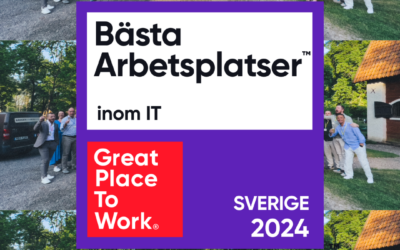You have heard about Agile, and know how popular it has become. Is it really the key to all future success, or is it just another buzzword? Whether or not you know the answer, you have come to the right place. Learn the basics, benefits, risks and what the real challenge in becoming Agile is. 👍
What is Agile?
Agile is an iterative approach to project management that enables teams to deliver value to the customers faster and with fewer headaches. An Agile team delivers work in small but consumable increments to improve customer satisfaction, instead of presenting the final result in a big bang reveal. The Agile methodology relies on four overarching values:
- Individuals and interaction over process and tools
- Working software over comprehensive documentation
- Customer collaboration over contract negotiation
- Responding to change over following a plan
Agile manifesto
These four values come from the Agile Manifesto. The Agile manifesto was created over a weekend back in 2001 by 17 software developers tired of the excessive documentation and planning in their software development cycles. They felt like they lost sight of what mattered – pleasing their customers. And that needed to change.
The solution was a 68 words long document that went on to change software development and project management forever.
Manifesto for Agile Software Development
We are uncovering better ways of developing software by doing it and helping others do it.
Through this work we have come to value:
Individuals and interactions over processes and tools
Working software over comprehensive documentation
Customer collaboration over contract negotiation
Responding to change over following a plan
That is, while there is value in the items on the right, we value the items on the left more.
As an extension of the Agile manifesto, the 17 developers created a list of twelve principles, expanding on some of the core values. The principles can be found here.
Agile project management (APM)
Agile has over the last two decades moved far beyond software development and has helped countless teams becoming more flexible and effective.
An Agile project is concluded in small sections called iterations. Iterations are the basic building block of Agile project management. It is a fixed-length session in which work is done and evaluated. Each iteration is reviewed and discussed by the project stakeholder. The insights gained from the review and discussions are used to decide and guide the next iteration. The iterations, or sprints as they are called in the popular Agile method Scrum, are usually short, running over days or weeks.
Why Agile project management?
The main benefit of Agile project management is its flexibility and ability to handle the inevitable issues arising throughout a project. Being able to make changes at the right time can save resources, and in the end, create more value for the customer. Other benefits include:
Reduced risk
Agile project management basically eliminates the risk of absolute project failure. By working in iterations from the very beginning, the team can deliver a working product from the start, or fail fast and try another approach. Read our short article about fail fast here.
Higher product quality
Since testing is integrated throughout the whole project process, areas of improvement can be found and dealt with regularly, improving the end-product quality.
Higher customer satisfaction
An Agile project relies heavily on feedback, especially feedback from the customer. By constantly giving the customer a taste of the solution and an opportunity to provide feedback, this enables businesses to deliver services and solutions tailored to the customer’s needs and to adapt to new ones more quickly. This keeps stakeholders engaged and creates a sense of anticipation with each new iteration.
Risks of Agile project management?
Every good comes with a bit of bad, so does Agile methodologies. Here are some of the possible downfalls of the popular methodology.
Lack of documentation
This is one of the reasons we see why many companies in the food and beverage industry might not have implemented agile methodologies yet. Proper documentation is essential when working with food. Although the value of documentation is recognized in the Agile manifesto, working software or solution is valued higher. This creates a challenge in balancing fast delivery and essential documentation.
Less predictability
As opposed to the waterfall project methodology, it is often hard to estimate the effort, time, and cost of the final solution. For teams and companies new to agile methods, the fear of the unknown can lead to frustration and poor decisions.
Being Agile vs Doing Agile
A common trap when adopting Agile is not fully committing to it, and therefore missing out on Agile’s full potential results. There’s a huge difference between adopting only certain aspects of Agile “doing Agile”, and “being Agile”, as in when the organization fully commits to the mindset and behaviors to infuse a culture of agility on all levels.
The real challenge in becoming Agile
let’s get something straight – it’s not an easy thing to adopt Agile methodologies in a world that is everything but Agile. Most shareholders expect clear plans extended well into the future, roadmaps, quarterly forecasting, and metrics to be met. Agile can be perceived as the antithesis of planning, and therefore be resisted, especially if you come from an organization used to waterfall project management.
What’s important to remember is that Agile at its core is designed to control and minimize risks, and isn’t that what we all wish to do in our projects?
Like what you read?
Hang out with us for more insights👍
Check out our other articles!
Elvenite rankas som en av IT-branschens bästa arbetsplatser 2024
Elvenite rankas som en av IT-branschens Bästa Arbetsplatser 2024 Elvenite har utsetts till en av Sveriges Bästa Arbetsplatser inom IT 2024, en prestigefylld utmärkelse från Great Place To Work®. Elvenite rankas på plats 15 av 25, vilket är en hyllning till vår...
När mjölken flödar stabilt, året om
När mjölken flödar stabilt, året omVisste du att mjölkproduktionen svänger kraftigt under året? Medan vi konsumenter köper mjölk i samma takt oavsett säsong, står mejerier som Valio inför stora utmaningar. Under sommaren flödar mjölken, men när vintern kommer minskar...
Så använder vi word embeddings och AI: från bordsplacering till dataanalys
Så använder vi word embeddings och AI: från bordsplacering till dataanalysAtt göra den perfekta bordsplaceringen är en utmaning vi alla kan relatera till, oavsett om det är en privat fest eller ett större företagsevent. Vågar jag sätta Anna bredvid Henrik eller kommer...



